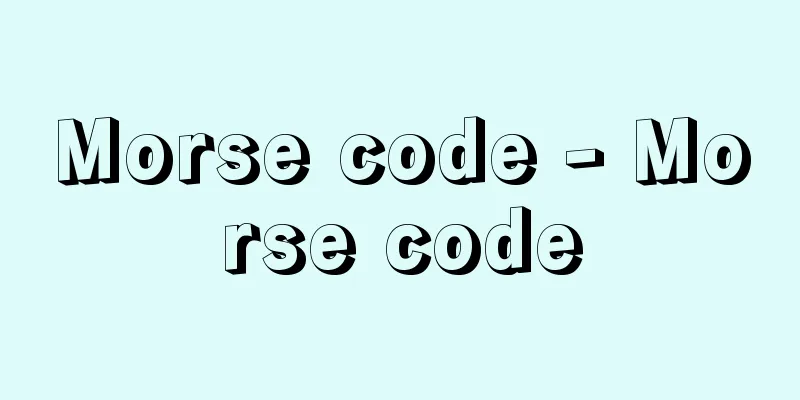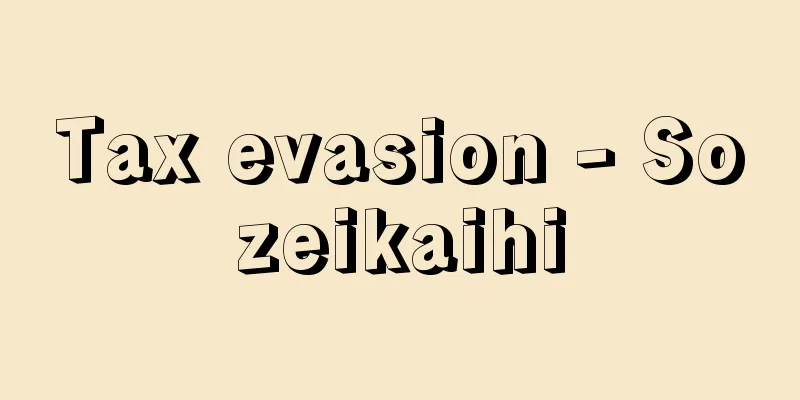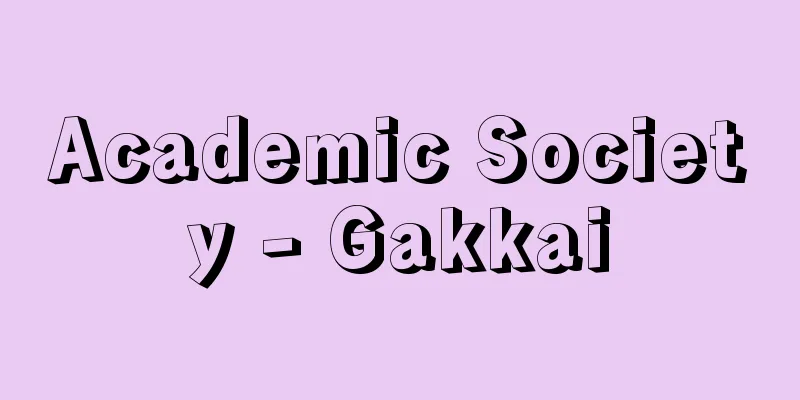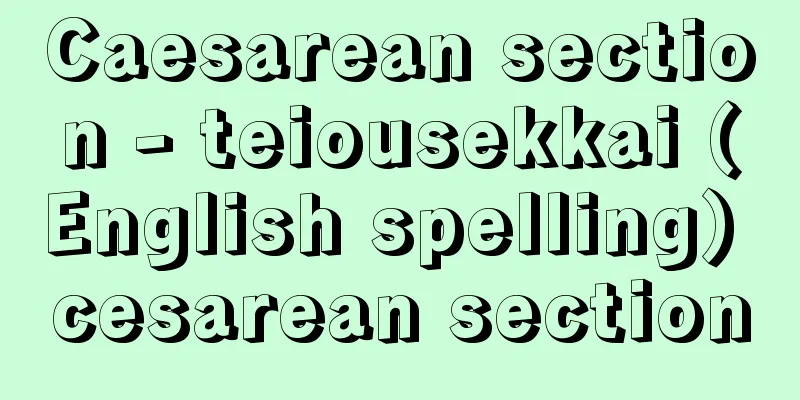Morse code - Morse code

|
A telegraph code that expresses letters and symbols by a combination of short dots and long sounds. In 1832, American painter and New York University professor S.F.B. Morse was intrigued by an electromagnet shown to him by a passenger on a voyage returning from Europe, and the idea of using this element to create a telegraph device captured his mind. The first Morse code was devised to operate this device. After several improvements were made, a practical code was perfected, and in 1837, with the help of Alfred Lewis Vail (1807-1859), the mechanical part of the communication device was completed. It took eight years until this excellent communication system was put to practical use in the United States. The first telegraph message, "What hath God wrought," was transmitted between Washington, DC and Baltimore using this code on May 24, 1844. Morse code is a code with 1 dot for 3 long sounds, 1 element interval, 3 character intervals, and 7 word intervals. It is an excellent code in terms of code theory, as the more frequently used letters are assigned shorter codes and transmission efficiency is taken into consideration. The unified code for Western language codes for international communication was determined by the World Administrative Telegraph and Telephone Conference of the International Telecommunication Union (ITU), and the Japanese code is determined by the Radio Station Operation Regulations of the Radio Law. Morse code has been used for communication in meteorological and maritime mobile services for over 150 years since its invention because it is a sophisticated code that has been cultivated by communication personnel as a medium for global communication, and it is superior in ability to communication in maritime mobile services than other communication systems. Codes for machines used in printing telegraphs and other applications cannot be interpreted by human perception, but Morse code is a code that humans can have a say in and that leaves immediate judgment to humans as communication devices continue to develop. It was Perry who brought Morse code to Japan, demonstrating a 1.6-kilometer single-wire Morse telegraph in Yokohama in 1854 (Ansei 1). The Japanese code was created by the Ministry of Public Works in 1869 (Meiji 2), but there was a tendency to apply the ABCs straight to the alphabet, and there was no rational relationship between the code length and the frequency of use of the letters. Morse code was used for a long time all over the world, but in 1999, the International Maritime Organization (IMO) decided to ban the use of Morse code for distress communications due to the switch to the new system, the Global Maritime Distress and Safety System (GMDSS). This made it meaningless to continue using Morse code for general communication at sea, and in Japan, the last remaining radio station in Nagasaki, operated by Nippon Telegraph and Telephone Corporation (NTT), stopped all Morse code telecommunication services on January 31 of the same year. However, in Japan, due to the lack of a re-education system to improve English skills to promote the many third-class general radio operator holders who work on fishing boat radio stations to third-class maritime radio operator qualifications, the complete transition to GMDSS has not been made even as of 2011. In other words, Japanese fishing boats are still fishing in international waters using Morse code. As of 2011, there is no information that there are any countries or regions where it is difficult to transition to the new system. Although South Korea still maintains several coastal stations using Morse code to communicate with ships, this does not appear to be an economic or technical issue, and so appears to be a well-thought-out measure. [Iwao Ishijima] [Reference items] | | | |©Shogakukan "> Morse Code ©Shogakukan "> Japanese Morse Code Source: Shogakukan Encyclopedia Nipponica About Encyclopedia Nipponica Information | Legend |
|
短点と長音の組合せによって文字や記号を表す電信符号。アメリカの画家でありニューヨーク大学の教授であったS・F・B・モースが1832年にヨーロッパから帰る航海中、船客の一人から見せられた電磁石に興味をひかれ、この素子を用いた電信装置実現の発想が彼の心をとらえた。この装置を運用するために考案したのが最初のモールス符号である。その後何回かの改良が行われ、実用的な符号を完成していく一方、ベイルAlfred Lewis Vail(1807―1859)の助けを受けて1837年、通信装置の機械部分が完成した。この優れた通信システムがアメリカで実用化実験にこぎ着けるまで、このあと実に8年を要している。この符号を用いてワシントンDCとボルティモア間に最初の電文“What hath God wrought”(神のなせし業(わざ))が伝送されたのは1844年5月24日のことであった。 モールス符号は短点1に対し長音3の長さをもち、符号の要素間隔1、文字間隔3、語間隔7、で構成される符号である。一般の英文で使用頻度の多い文字ほど短い符号が割り当てられ、伝送能率に考慮が払われているなど、符号理論上も優れた構成である。欧文符号は国際通信用として国際電気通信連合(ITU)の電信電話世界主管庁会議において統一された符号が定められており、和文符号は電波法の無線局運用規則によって定められている。モールス符号が発明されてから150年以上にもわたって、気象業務や海上移動業務の通信に使用されたのは、この符号が、通信関係者が世界的規模の意志伝達の媒体としてはぐくんできた洗練されたものであり、他の通信システムより海上移動業務の通信においては能力的に優れているからである。印刷電信などに用いる機械のための符号は人間の知覚で判断できないが、モールス符号は通信装置が次々に発達していくなかで、人間が立ち入ることができ、即時の判断が人間に任せられた符号なのである。 モールス符号を日本にもたらしたのはペリーで、1854年(安政1)に横浜で1.6キロメートルの単線によるモールス電信の実演を行ったという。和文符号は1869年(明治2)に工部省がつくったものであるが、アルファベットにいきなりイロハを当てはめた傾向があり、符号長と文字の使用頻度についての関係も合理性がない。 長きにわたって世界中で使用されたモールス符号であるが、国際海事機関(IMO)の決定により、新システムである「海上における遭難及び安全に関する世界的な制度」(GMDSS)への切り換えを理由に、1999年(平成11)をもって遭難通信に使用することを禁止された。これは、海上通信において、一般通信にモールス通信を継続使用する意味を失わせるものであり、日本でも、最後に残っていたNTT(日本電信電話株式会社)の長崎無線局が、同年1月31日をもっていっさいのモールス符号による電気通信業務を停止した。しかし、日本では、漁船の無線局に乗務する多数の第三級総合無線通信士資格の所有者を第三級海上無線通信士資格に昇格させるための、英語力アップの再教育システムの欠如により、2011年時点でも、完全なGMDSSへの移行が行えていない。つまり日本の漁船は現在でも、モールス通信によって国際海域で漁を続けているのである。2011年時点で、新システムヘ移行が困難であるという国家、地域、があるという情報はない。韓国がいまだにモールス通信の海岸局数局を維持し、船舶と通信しているけれども、経済や技術の問題とは考えられないから、深慮あっての措置であろうと思われる。 [石島 巖] [参照項目] | | | |©Shogakukan"> 欧文モールス符号 ©Shogakukan"> 和文モールス符号 出典 小学館 日本大百科全書(ニッポニカ)日本大百科全書(ニッポニカ)について 情報 | 凡例 |
<<: Mortar - Mortar (English spelling)
>>: Maldives - Morujibu (English spelling) Maldives
Recommend
Obirinsan - Obirinsan (English spelling) Banded Linsang
It is a member of the Mammalia class, Carnivora o...
Warm front - Ondanzensen
A front in which the warm air mass is dominant an...
clerestory
…There are also Assyrian reliefs and Egyptian wal...
Violet root rot
...Affected plants lose vitality above ground, th...
Skytia
…the Scythians were a nomadic horse-riding people...
Althing - Althing
…In office since 1996. The parliament (Althing) c...
Ikina Island
An island in the eastern part of the Geiyo Island...
Gold ring - kumquat
〘noun〙① A ring made of gold. Also, a ring of golde...
Reclams Universal-Bibliothek
The German "Reclam Encyclopedia" is a s...
Newyorker
…It was one of the pioneering attempts of the pen...
Dukun (English spelling)
A vague general term for professional magicians an...
Hikosha - Higyosha
[1] One of the buildings in the Heian-kyo Imperial...
Rivera, J.
In October 1960, a popular coup d'état, influ...
Bethlen M.
… [Austrian rule] The military victory of Austria...
Lalitpur
...The capital of Lalitpur district in the southe...









